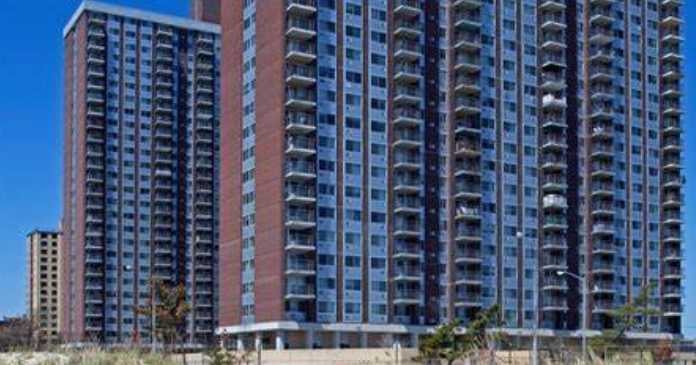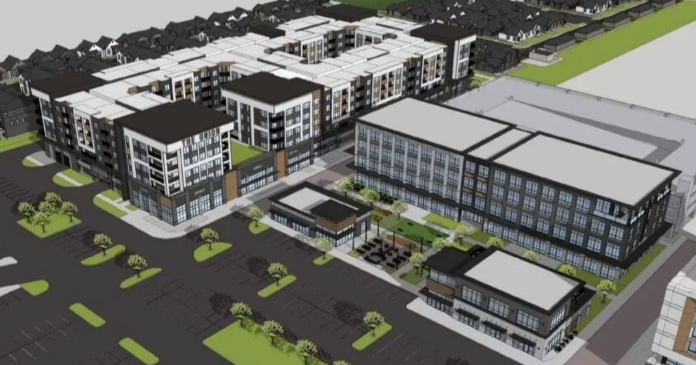The multifamily industry has been an important part of the 65-year- old National Association of Homebuilders (NAHB) for decades. Since 1981, NAHB Multifamily has served as one of the voices of the industry. But during its first 20 years, that voice wasn’t very loud.
Sharon Dworkin Bell and the Multifamily Leadership Board, which was created shortly before the 20-year veteran of the housing industry was hired in mid-2001, have been working to get the word out internally and from coast to coast.
“The association made a decision to enhance its presence within the multifamily industry and that’s when I came on board,” Bell said last month, explaining that the effort was two-fold, intended to bolster both the presence of multifamily within NAHB and NAHB Multifamily’s presence within the industry.
Tom Bozzuto, CEO and co-founder of the Maryland-based Bozzuto Group and first chairman of NAHB Multifamily’s five-year-old leadership board, echoed Bell’s sentiments. “One of the reasons I became interested in taking a role in the leadership council was that it seemed to me that this new board represented recognition from NAHB’s leadership of the important role played by multifamily builders in meeting the nation’s housing needs,” said Bozzuto whose organization has built nearly $3 billion of rental and for-sale residential units since its inception in 1988.
“We’ve actually been very successful. We’ve reached out to the trade press and communicate with them on a regular basis and we are working with our state and local homebuilders associations to start multifamily councils across the country,” said Bell, who serves as NAHB Multifamily’s primary staff liaison to a network of resources and experts at NAHB, including legislative and political operations, economics, housing policy, construction codes and standards, land use and legal action.
The first of those local NAHB Multifamily chapters was formed in suburban Washington, D.C., the city that is home to NAHB. “We’re talking with homebuilders associations in large cities that always have had a concentration of multifamily, but also in second- and third-tier cities where multifamily is a relatively new phenomenon. Places like Kansas City that are seeing condos and density for the first time,” said Bell, who was with Fannie Mae’s office of investor relations prior to joining the national builders association.
NAHB is a federation of more than 800 state and local associations and about one-third of its 235,000 members are homebuilders and/or remodelers. The remaining members are associates working in fields closely related to the residential industry, including mortgage finance and building products and services.
Bozzuto believes one phenomenon that has spurred the growth of NAHB Multifamily’s influence and recognition within the industry is the condo boom that began to resonate across the country around the time he was chosen by his NAHB constituents to head up the organization’s multifamily leadership board.
At that time, he said, there were industry groups that clearly represented the rental industry, but there were really no groups that quite crossed over to multifamily condominiums. NAHB Multifamily likely was the first.
Trammell Crow Residential CEO Ron Terwilliger, whose company builds both condos and apartments, took over Bozzuto’s place when the first chairman’s two-year term ended and carried on that tradition, followed by Leonard Wood, the current chairman, whose company also focuses on both sides of the multifamily industry. Today, virtually all of NAHB Multifamily’s development members are players in both the condo and apartment arenas.
Bozzuto recommended Terwilliger as his successor and it was Terwilliger’s idea to ask Wood to take his place, which Bell believes is a testament to the strength of the organization that steers NAHB’s multifamily faction. “I take it as a compliment to what we’ve accomplished and plan to accomplish with the leadership board that Ron would say to Leonard, ‘This is a good use of your time,'” she said.
“Because of their stature and presence in the industry, their serving as chairmen gives the leadership board credibility, stature and presence,” Bell said of the past and current board leaders, adding that they have a major role in setting the agendas for NAHB Multifamily’s two meetings each year and for the annual Pillars of the Industry conference that was added five years ago to the gala that, for the past 16 years, has celebrated the winners of Pillars of the Industry awards that many view as the Oscars of the multifamily industry.
The conference offerings include an exhibit hall where vendors of multifamily products, services and technologies display their wares and two days of panel discussions and presentations that focus on all aspects of the multifamily industry. This year’s conference topics include strategies for coping with today’s high cost of construction and entitlement; the latest, greatest and most cost-effective design trends, and techniques for green building and development of affordable workforce housing that doesn’t break the budget. One of the conference’s most popular sessions features the cutting-edge ideas and best practices that won recent Pillars of the Industry awards for their creators.
Bozzuto, whose company has captured numerous Pillars awards over the years and last year took home “Oscars” for Spinnaker Bay Waterfront Apartment Homes in Baltimore, Md., in the Best High-Rise Rental Apartment (9 stories and above) category and for The Hawthorne at Gillette Ridge in Bloomfield, Conn., which was chosen as the Best Garden Rental Apartment Community/Secondary Market, believes the benefits of winning Pillars awards go far beyond the obvious gratification of being recognized by one’s peers.
“It helps with your employees in terms of building morale and certainly makes the people who are part of your organization feel that their work is recognized,” he said, adding that such appreciation of their efforts also contributes to employee retention. In addition, being a Pillars winner makes the recruiting process easier because “people want to work for a company that has been honored for excellence by its peers,” he said.
A Pillars award designation on a community’s signage certainly adds to curb appeal, attracting residents who like the idea of living in an award-winning community, said Bozzuto.
“A lot of us in this business are regional companies and national recognition is both important and very rewarding,” he said.















